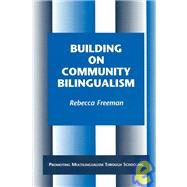|
1 | (86) | |||
|
6 | (16) | |||
|
7 | (6) | |||
|
13 | (3) | |||
|
16 | (6) | |||
|
22 | (18) | |||
|
23 | (10) | |||
|
33 | (2) | |||
|
35 | (5) | |||
|
40 | (23) | |||
|
41 | (9) | |||
|
50 | (4) | |||
|
54 | (9) | |||
|
63 | (24) | |||
|
63 | (5) | |||
|
68 | (13) | |||
|
81 | (6) | |||
|
87 | (62) | |||
|
95 | (18) | |||
|
96 | (9) | |||
|
105 | (3) | |||
|
108 | (5) | |||
|
113 | (15) | |||
|
113 | (5) | |||
|
118 | (3) | |||
|
121 | (7) | |||
|
128 | (21) | |||
|
129 | (3) | |||
|
132 | (11) | |||
|
143 | (6) | |||
|
149 | (76) | |||
|
156 | (23) | |||
|
157 | (6) | |||
|
163 | (13) | |||
|
176 | (3) | |||
|
179 | (22) | |||
|
180 | (6) | |||
|
186 | (13) | |||
|
199 | (2) | |||
|
201 | (24) | |||
|
202 | (2) | |||
|
204 | (3) | |||
|
207 | (15) | |||
|
222 | (3) | |||
|
225 | (124) | |||
|
235 | (22) | |||
|
236 | (4) | |||
|
240 | (10) | |||
|
250 | (4) | |||
|
254 | (3) | |||
|
257 | (23) | |||
|
257 | (12) | |||
|
269 | (5) | |||
|
274 | (6) | |||
|
280 | (17) | |||
|
281 | (9) | |||
|
290 | (7) | |||
|
297 | (28) | |||
|
298 | (4) | |||
|
302 | (6) | |||
|
308 | (9) | |||
|
317 | (8) | |||
|
325 | (24) | |||
|
326 | (2) | |||
|
328 | (1) | |||
|
329 | (5) | |||
|
334 | (2) | |||
|
336 | (5) | |||
|
341 | (8) | |||
| Glossary | 349 | (5) | |||
| Resources for language educators | 354 | (1) | |||
| Bibliography | 355 | (7) | |||
| Author Index | 362 | (1) | |||
| Subject Index | 363 |








